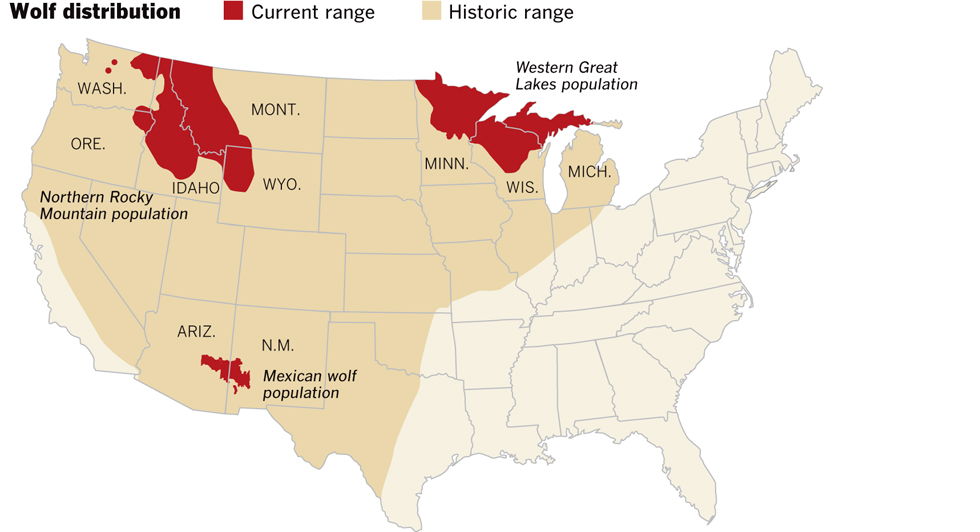
Gray Wolf habitat has been reduced to Canada, Alaska, the Great Lakes, northern Rockies, and pacific northwest. Their historic range covered over ⅔ of the United States, this includes forests, tundra, grasslands and deserts (National Wildlife Federation, n.d.). They need a large amount of space away from human disturbance to establish a home range where they can hunt and den for parturition and protection (Humane Society:Wildlife Land Trust, n.d.). Wolves are a keystone species that need connected populations and natural ecosystems to thrive. By regulating prey populations and recolonizing vacant niches, the Gray Wolf is able to play a pivotal role in ecosystem function (Animal Welfare Institute, 2020). Habitat fragmentation and loss are large contributing factors to the decline in Gray Wolves. The 5,000- 6,000 wolves today occupy 10% of the range that they used to in the lower 48 states (Center for Biological Diversity, n.d.). The habitats for the Gray Wolves also range in terms of risk. For example prairie lands are at extreme high risk, while forests in the pacific northwest have more protection but are still at risk. Deforestation, agriculture, and climate change have impacted these habitats throughout the U.S and Canada and will continue to cause greater decline in population for Gray Wolves.
